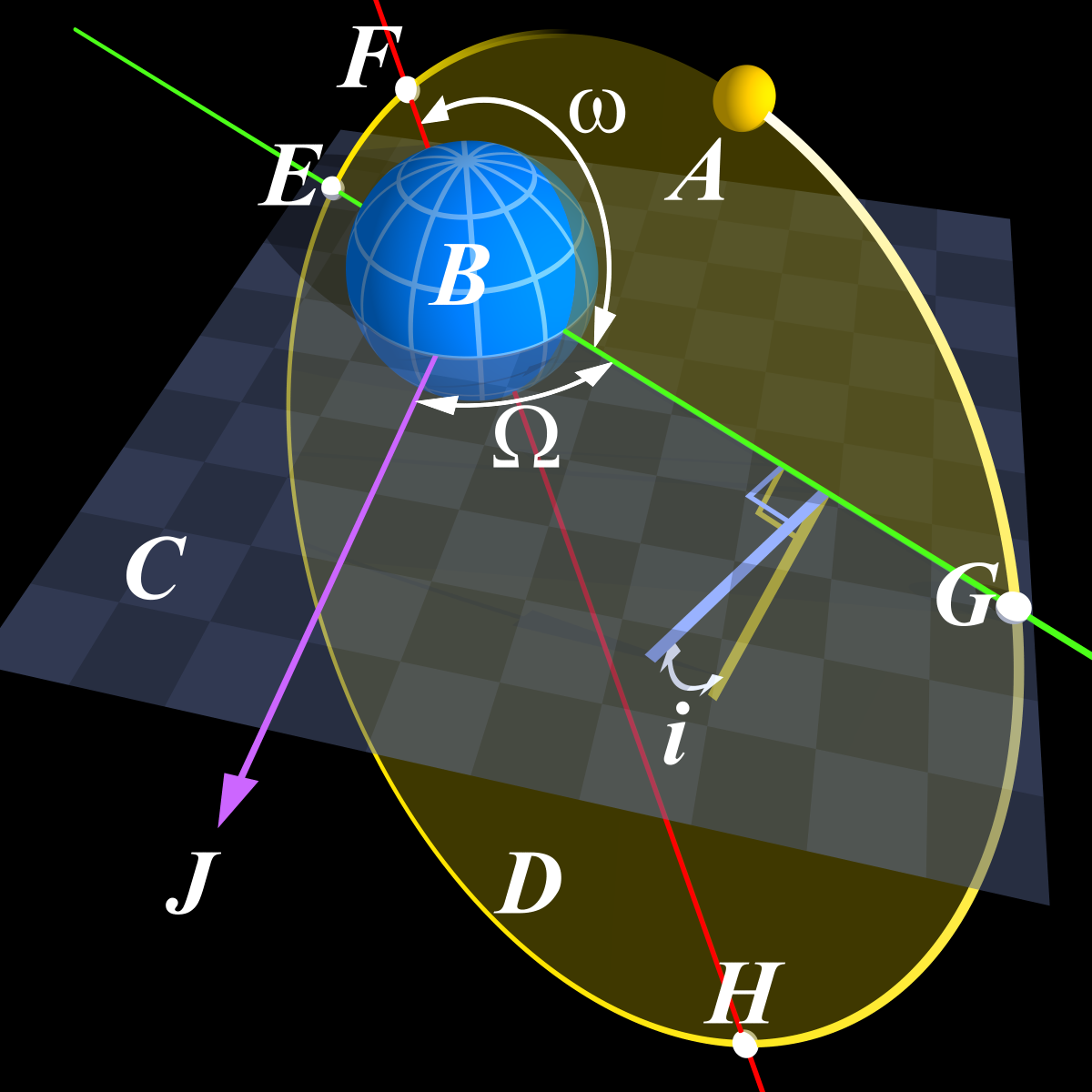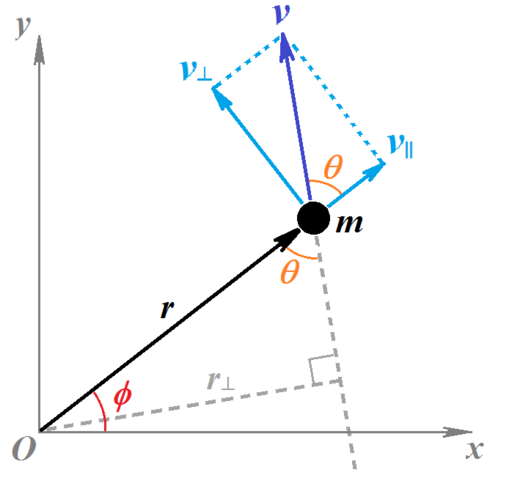
Orbital Motion In The Solar System
In this article I wanted to talk about how and why celestial bodies move in our solar system.
Table of Contents
- Introduction
- Planetary Motion
- Ellipticals
- Newton’s Laws
- Momentum
- Gravity’s Effect
- Asteroids And Comets
- Conclusion
Introduction
The motion of planets and other space objects can seem strange. Hardly anything moves in a straight path. Planets and moons sometimes disappear. Even when you track something, its path is somewhere between circular and totally random. Everything is just counter-intuitive.
The reality is really not that bad. Once you know a bit about orbital motion and gravity, it will all make sense. I promise! So let’s get going and restore some order to our night skies.
The most important concept that we need to talk about is gravity. It is the reason for being. It is the key to it all.
Let me say right here that I am discussing the original interpretation of gravity and not Einstein’s curvature of spacetime.
Planetary Motion
Let us start with Tycho Brahe. He was a Danish astronomer who observed the motion of celestial bodies for many years. He recorded all of his data. This data was essential to Johannes Kepler and his eventual laws of planetary motion. His laws of planetary motion catapulted modern science forward.
A planet such as our Earth, Mars, or Venus moves in an orbit. An orbit is the path it takes. Astronomers first thought the orbits of planets were big circles, but they soon discovered it was something else entirely. Planets just disappeared. They disappeared because scientists at the time were looking in a circular path. They did not know about elliptical motion.
Ellipticals

This was the crux of the times. Kepler, however, soon found out that planets moved in an elliptical shape. He did not know why.
We can describe an elliptical as an irregular circle. There is not any definite shape to an elliptical because its lengths can vary. I can call any of the lengths an elliptical. The center of the elliptical to the longest side is called the semi-major axis. It is half the length of the diameter.
The eccentricity of the ellipse is also important. It is a measure of how circular or non-circular an ellipse is. We calculate it using a ratio of the distance between the foci to the length of the major axis. You can think of it as a triangle. You have the center of the ellipse, the foci in one direction, and then the major axis at the other end.
An eccentricity of 0 means the shape is perfectly circular. As eccentricity approaches 1, it is very elliptical. If eccentricity is over one the object is probably not orbiting the center of the ellipse at all.
Newton’s Laws
This leads us to Newton’s laws. He was famous for his three laws, and they had a tremendous impact on the scientific world.
First Law = Every object continues to be in the same state of moving or non-moving and at a constant speed in a straight line unless another force changes this.
Second Law = The change of motion of an object is proportional to and in the force's direction acting upon it.
Third Law = For every action, there is an equal and opposite reaction.
These laws are pretty straightforward. However, let me explain to anyone that might not be familiar with them.
The first law says that objects will stay at rest or continue in the same line of motion unless some external force acts upon it. An example of a force that would change it could be friction or another object striking it. In either of these two cases, the original object would experience some change of motion or direction.
The second law is a little more vague. In a vacuum, this is what happens. However, hardly anything is in a vacuum, though space can sometimes be close. If you neglect friction, a pool ball can change its course to match perfectly the direction that another ball strikes it. The original pool ball will have the same direction and velocity as the one that hit it. Keep in mind, this is a vacuum instance we are talking about.
I think the third law of Newton was his most profound. If you think about it, it is true whether or not in a vacuum. The reason it is so important is that it implies their forces do not act alone. If there is an equal and opposite reaction, that means there are multiple forces at play.
Momentum

This brings us to the next concept that is important in understanding orbital motion, which is momentum. Specifically, I am talking about angular momentum. Let us use planets as example pieces. Angular momentum is its rotation as it revolves around the Sun. It is calculated by multiplying together its mass, velocity, and the square of its radius.
Another factor that Newton’s third law is talking about, is that momentum must be conserved. This is the equation for angular momentum.
\[angular momentum \propto mass * rotation * radius^2 \]
You can see that mass is involved and that will become more important later on. This is because we must conserve linear and angular momentum at all times. So, with any change to the object, the properties just shift so that the momentum is conserved.
Gravity’s Effect
Now we come to the culmination of our previous concepts. We talked about a force would have to affect any object in order for it to change its velocity. In space, this force is usually gravity. Gravity affects everything. It’s affect depends on the mass and distance of the objects in question.
Gravity is the reason the Earth and the other planets orbit around the Sun. The Sun is so massive that it influences everything in the solar system. All the celestial objects that include planets, moons, asteroids, comets, and gas clouds are all controlled by our Sun. This is what almost all stars do throughout the universe.
The equation that lets us calculate the force of gravity on certain objects is:
\[ F_gravity = G\frac{M_1*M_2}{R^2}\]
This tells us the gravitational force between these two objects. R is the distance between these objects. G is the famous gravitational constant.
Gravitational attraction affects all forms of mass. Since nearly everything has mass, it is ubiquitous. The more mass an object has, the more gravitational force it applies.
Gravity gets weaker with distance, no matter the mass of the original object. However, if the distance is far enough away, the effect is minimal and not really noticeable. That is just the nature of mass and gravity.
Asteroids And Comets

There is an abundance of asteroids and comets in our galaxy. Most were probably formed as our galaxy was birthed. Now, they don’t really have a purpose. They are just chunks of leftover material that got caught in the Sun’s orbit.
Their orbits are very eccentric. Most travel around the asteroid belt. The asteroid belt is a band of rocks(not a rock band) that orbits the Sun. Many have collisions and take trips through the galaxy, even though still fully under the influence of the Sun.
The asteroid belt is between Mars and Jupiter. Many astronomers study this area. They hope to find new and interesting objects, possibly another planet that is hiding there.
Comets usually have much larger orbits. Their paths are very eccentric through the solar system. There are several famous ones that come our way every once in a while. Take the chance to see them when you can. Many you will only see once in a lifetime.
Conclusion
In this section, we started by discussing the laws of planetary motion. Tycho Brahe made these possible. He kept extremely detailed records of his observations. They were critical to later astronomy. We don’t give enough credit to him because of this.
Isaac Newton took the theories of Johannes Kepler and applied them with his own ideas. Using calculus, he came up with his laws of motion and the outstanding law of gravitation. These laws allowed us to calculate the mass of planets, examine their motion, and predict where they would be in their travels.
We then examined the different orbits in our solar system and talked about eccentricity. We know now that lower eccentricity means an almost circular orbit. This was also critical in our understanding of why planets and other objects traveled in the paths that they did.
Thanks For Reading
If you read this, I just wanted to say thank you.
You can join my newsletter here.
Here is my previous article, Getting Started With Astronomy.